Using the tactical battle map in The Fate of All is a nice expansion upon what feels like a logistics centric Ancient Worlds or Imperium Romanum meets Next War from SPI AKA Under an Iron Sky with pointy bits vs tanks and it works.
If you were following along from prior posts or videos you know that we rolled to see if Memnon would attempt to intercept and who…sadly he pick Alexander and on a good day.

The more detail combat system once the rules are down, plays pretty quickly. I’d say in about half the time of a Great Battles of History scenario of the same or equivalent size. Why?
Well less command rules overhead, less nuanced tactical details, no double hex counters and a very different sequence of play. But the game has the GBOH feel from some earlier version
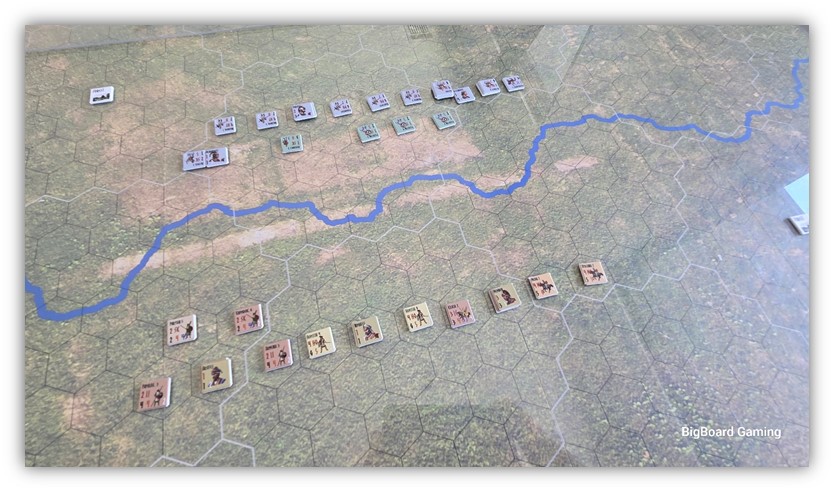
In this system like GBOH each Leader from lowest rating [in this case strategy rating] is activated. They can activate any units in range and yes there are even line commands. Though after the first line command they get harder to do, and require a die roll to put into effect.
Trumping or ‘Opportunity Activation’ is allowed by higher rated Leaders.
A major departure is the conclusion of ALL activities per activation including combat for each Leader. Movement, missile fire and Melee are all concluded within an activation. More on that in a moment.
Leaders have as many commands as their strategy rating. So our boy Alexander has 5 for example. He could move himself, rally, reform a unit, lead men into combat and resolve said combat all in one activation. Other leaders…well if you are a lowly Persian leader you might receive just one command. Choose wisely. Move or Rally, Move or Reform etc.
In our small taster battle here, the battlefield is shaped by the defender generally. In this case Alexander as he was attacked in forest will add two forest ‘megahexes’ to the map. Then place his units.
After some to and fro with the designer of similarities and differences to GBOH I finally released my GBOH bias, and dug more fully into the rules. I will say that I am still on the fence about how these battle will play out when Alexander faces a significantly larger force, which he typically did. I also found some time was spent bouncing around the rules for
The situation at end of turn 1. tactical combat to ensure all was going correctly. Which led to a major hard reset. Some rules are written in the negative, versus stating what a unit or a mechanic is. Often with the salient point being the last one. Great for rules lawyers, a tad frustrating for dice rollers.
So combat at this scale, how does it work?
In turn one all the Leaders moved in sequence until Memnon announced his move late turn. Alexander trumped him, no rolls required it happens for any leader who attempts it I believe. [rules check required] – Alexnader advanced his cavalry 6 movement points to pre empt the Persians and set up a second turn combat.
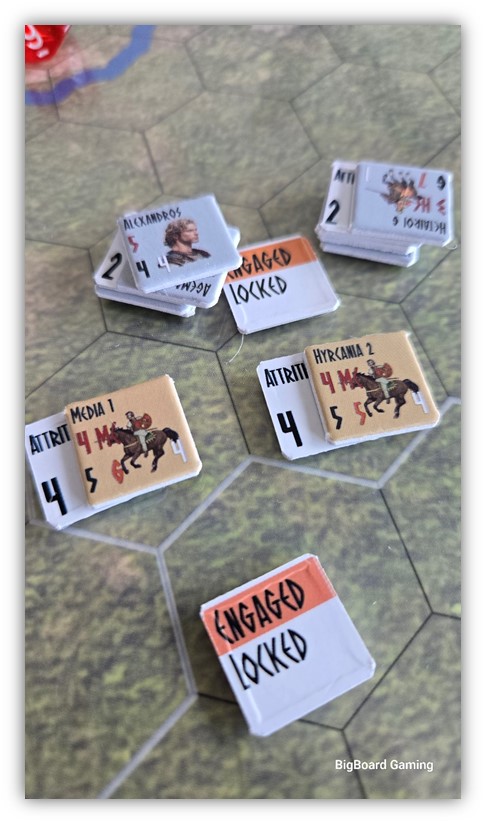
In turn two Alexander opportunity activates again and charges Memnon’s Medium Cav. This is almost a like for like combat, baring size. Persian cavalry are huge units upwards of 1,000 horse, vs a mere few hundred [1 Stacking Point vs four Stacking Points of Persian] . Stacking is limited to four for Cav, so Alexander uses the Agama and HC and his adjacent stack four stacking points also.
When a Charge or Melee is announced, a Melee or charge marker is placed on the units in question. At the end of combat the if all units are still fighting then Engaged Locked markers are placed. Note that unlike GBOH there is not check to stand and fight morale roll.
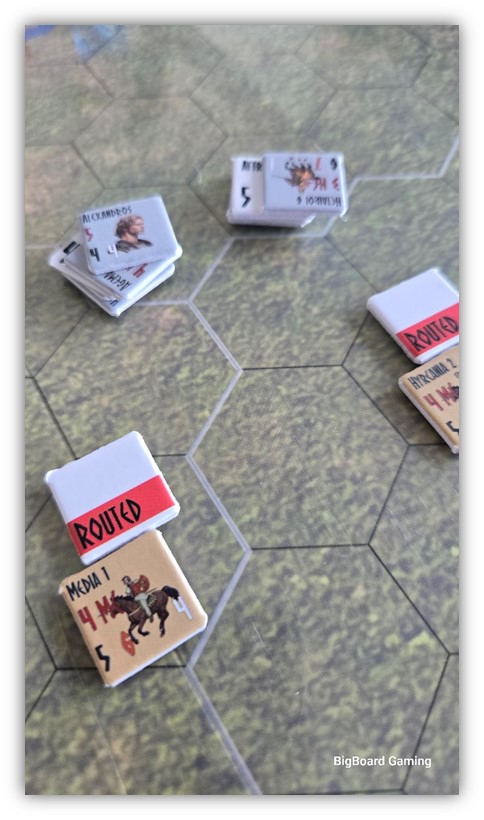
Only the top units combat value is used, as is the ‘weight’ of the stack of each side , (which is expressed as a ratio of Stacking Points, applied as a DRM with a maximum of +3) plus a charge bonus, the leaders strategy rating, a modifier for being within two of your morale level as a unit and that is it. Well and a flanking bonus also.
Similar to clash of spears in GBOH you as the attacker will always take losses, as will the defender except in on instance on the results table. The CRT is a differential calculated by taking the attack values of both units and netting them out Attacker minus Defender and looking at the correct column. The results go from 0 through 11 on the CRT. A typical cavalry on cavalry combat will run the gamut of +3 to worst neutral [0].
As we can see with Alexanders afore mentioned five strategy rating an no opposing leader life will be pretty ok for him. They end up with a monster +7 [no weight bonus]. He rolls a 9, so on the +2 column that is max result one loss for four losses. Each loss is a reduction in your morale, once you reach your morale you rout. The other stack attacks on the plus one column he rolls a ten! Also, a maximum result.
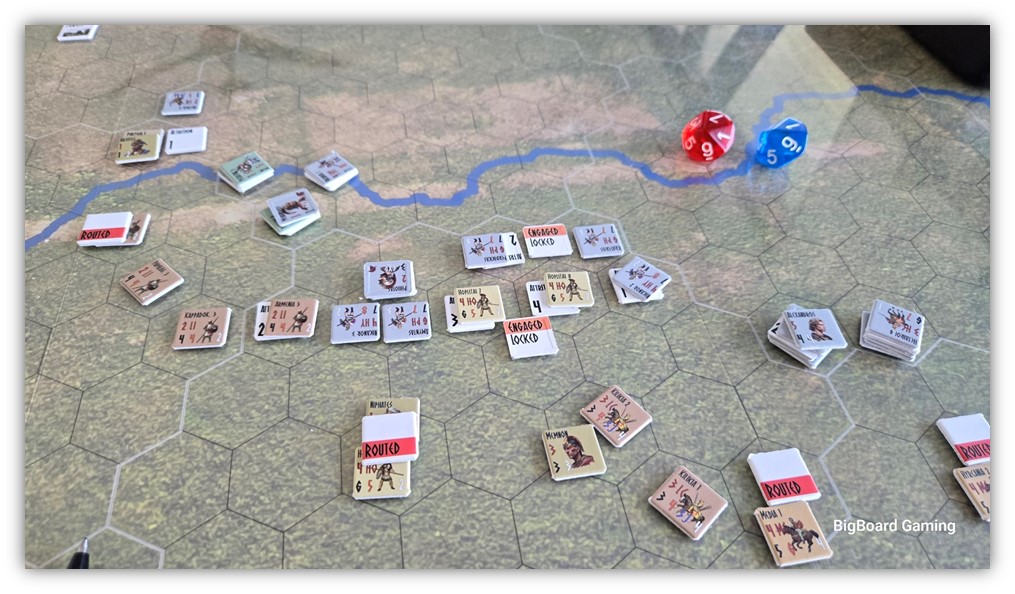
Well in for a penny in for a pound the Greek Sk’s [skirmishers], retreat through lines and in a subsequent activation the Phalanxes advance to contact against the Hoplites. Philotas leads the efforts pushing forward Krateros, Perdikas and Nicanor, given close order formations of Hypasists and Phalanx they may stack up to six stacking points. I’m assuming this is a reflection of Phillip the II’s reforms as Hoplites are not able to take advantage of this stacking depth. This means in the upcoming battle a PH & HY unit stack will have a weight of five, vs two for the Hoplites gaining a 2:1 Advantage (+2 DRM). I make the HY units the lead with the highest morale of eight. While the Hoplites pack a punch with six as the combat factor their morale as merc is just five. The Hoplites and eventually in turn three the Light Infantry all succumb to the pointy attacks of Macedon and rout.
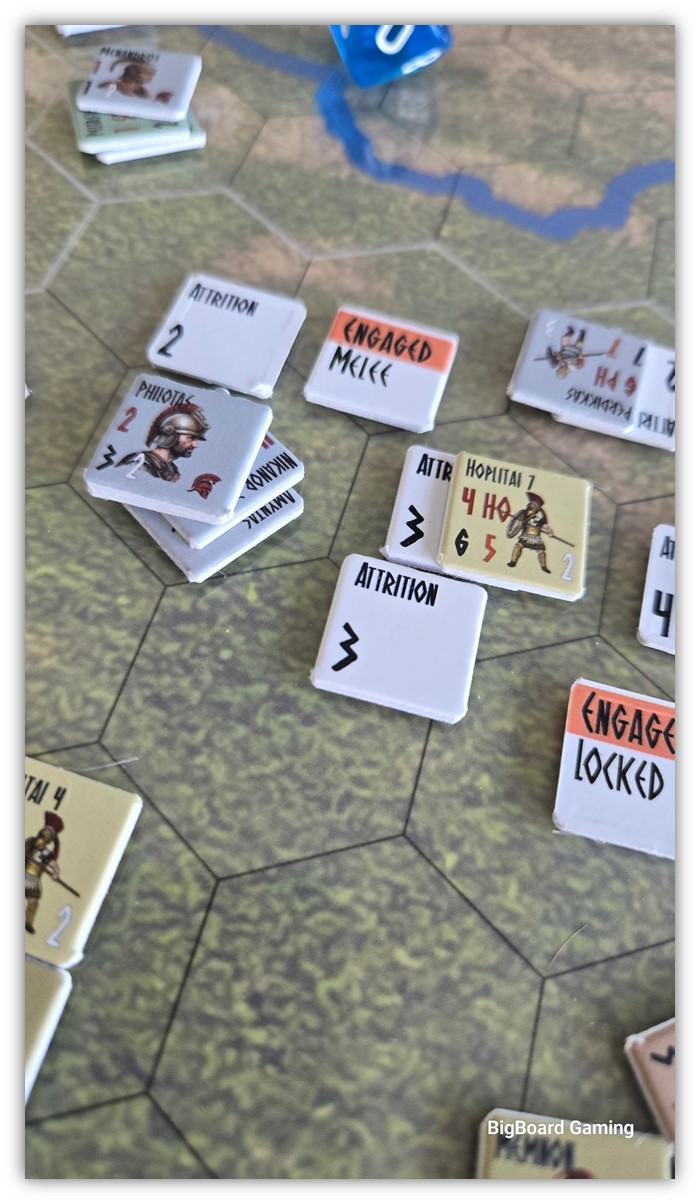
At the outset of a battle we look at the Games OVERALL morale for each side and express the current size of the army as a percentage. Why? To ascertain the morale level for this fight. Since both sides are close in size and Morale levels overall are close too, the math works out to be 14 for the Persians and 17 for the Greeks. As units rout off the board in the appropriate phase the tally mounts quickly. Once and here is another weird wording thing, the tally reaches a positive number or zero the Army must check to see if it routs in total. Rather than count down the Armies morale to zero, we subtract the Armies morale from the current routed units total. For example, at one point we have 8 stacking points routed, their morale is 14 8-14= -6 . Keep on fighting. But once the Armies Morale is zero or a positive number we check for Army Rout? Why don’t we just count down the Armies morale to zero and or negative then roll. Its just counter intuitive to me. OR count up the routed point to the 14 ? Little things like this are all through the rules, and really do my head in sometimes.
Anyway back to the exercise. Alexander has now demolished the right Wing, Memnon is a bit non plussed, he assess options and realizes he can’t really attack, as it will just accelerate his demise, so he hangs on looking for poor rolls from the Greeks.
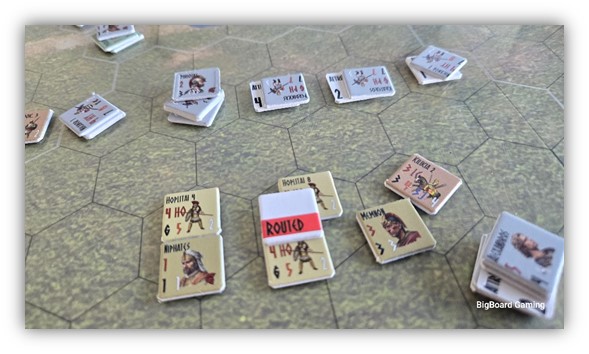
Three more routs and the battle is over.
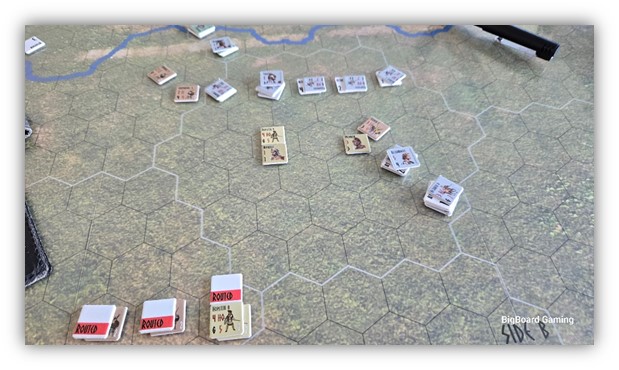
What happens now back on the big map? Lots of cool things.
But first every unit that routed, is flipped to its reverse side if it has one and that is its new status on the Operational Map. Memnon may retreat up to 15 MP and then we will need to adjust morale for both sides.

So, Alex inflicts eight steps of damage in exchange for three. But as the Persians retreat they of course leave the battle field and take further losses 25%, of the twelve steps left, so 2.4 steps [ I round this down, poor Persians] , as it gets worse, Pursuit is next, ans as a function of the number of cavalry harassing them they five more stacking point losses. For a net of 14 of 30 lost in the battle.

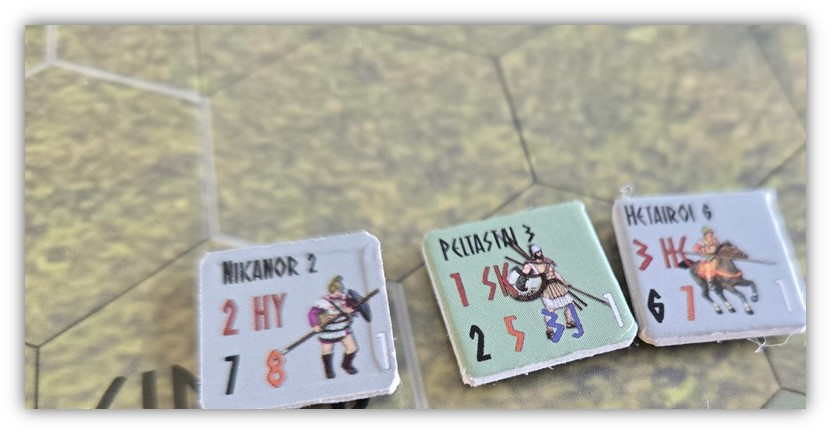
A Major defeat by any measure, but Alexander does lose a HC unit, which surprises me, as part of the mandatory loss spreading if I’m reading the rule correctly.

One thought on “The Fate of All: Combat”
Comments are closed.